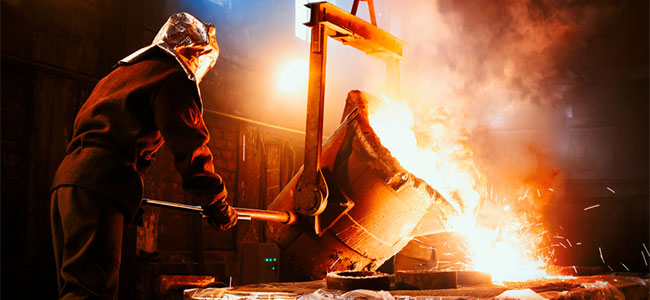
Protective Apparel at the Tip of the Pyramid
What are the innovations and strategies impacting protective apparel for workers in extreme environments such as foundries and pulp paper mills?
- By David Kopf
- Oct 11, 2023
The more extreme the work environment, the more protective apparel can mean the difference between a job well done and a disaster. Recent trends in fibers, materials, and coatings are impacting how the developers of apparel help employees do tough jobs.
For example, workers in foundries are regularly exposed to extreme temperatures and situations. Molten metal can exceed temperatures of 2,500°F. This exposes workers to a high risk of burns if safety measures aren’t followed. For another example, pulp and paper mill workers can be exposed to chemicals like chlorine, chlorine dioxide and sulfur compounds that can lead to respiratory issues, burns, and other health concerns. Also, the paper drying process requires high temperatures, putting workers at risk of heat-related illnesses and burns.
While just two industries, these two environments underscore why workers in those industries need protective apparel that’s on par with the seriousness of their environments.
The Hazard Pyramid
Jake Hirschi, general manager of CarbonX, a TexTech company that makes PPE and fire-resistant apparel, paints a picture of the protective apparel landscape using a metaphor he calls the “hazard pyramid.” At the pyramid’s base, you find protections against more common, albeit less deadly, threats such as welding splatter — products such as FR cottons and acrylics.
Those items can still protect against severe events, such as flash fires or arc flash incidents, but the likelihood of something extreme happening is low. However, as you climb the pyramid, the threats become more lethal, and the solutions grow more specialized.
“We operate at the very top of the hazard spectrum,” Hirschi explains. “If you could die from heat exposure or from metal splash or from fire, that’s where we are at.”
When it comes to recent protective apparel innovations at the hazard pyramid’s apex, one of the most significant shifts has been a newfound appreciation for the benefits of layering that has emerged over the last seven or eight years. Rather than the materials, it’s how they’re worn.
The Shift to Layering
Prior to that, workers might just don an aluminum jacket and coveralls and believe they were adequately protected. Now, there’s a deeper understanding of layering’s compounding protective effect.
“It’s not just an addition, it’s a compounding effect in protective capability,” Hirschi explains. “There’s also a recent recognition that there’s multiple exposure.”
This article originally appeared in the October 2023 issue of Occupational Health & Safety.